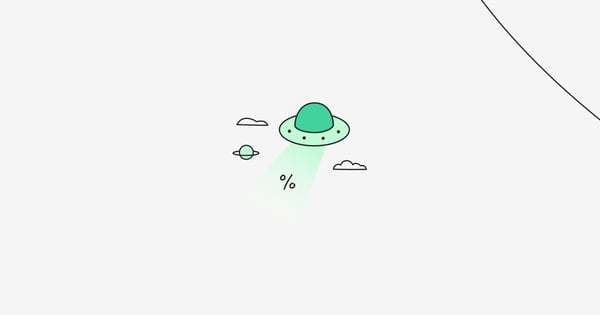The cheaper your product, the more you’ll sell, right?
That’s not always true. Research from Vanderbilt Owen Graduate School of Management found that for some consumers, price is a leading indicator of quality.
If your prices are consistently low, consumers could start associating your brand with low-quality products, which in turn could hurt performance. In one famous example, US retailer JCPenney saw sales drop by 25 percent after it ditched sales and coupon deals in favor of everyday low prices.
It’s all a matter of psychology.
While consistently low prices clearly offer better value to consumers, it’s hard for us to resist the allure of a big discount (even if that discount is totally arbitrary).
This goes some way to explaining why flash sales are such a popular e-commerce marketing strategy, so I put together seven flash sale examples from real brands to inspire your next sale campaign.

7 Flash Sale Examples That Work
What Is a Flash Sale?
A flash sale is simply a time-limited promotion or discount.
While there’s no specific time window to qualify as a “flash sale”, they typically last no longer than 48 hours, and sometimes only for an hour or two.
The primary purpose of flash sales is to lure shoppers into making impulse purchases motivated by the fear of missing out on an incredible, one-off, short-lived price cut.
However, brands might also have secondary objectives for launching a flash sale, such as:
- Building brand awareness;
- Increasing customer loyalty; or
- Driving sales of non-discounted products.
Without further ado, let’s dive right into seven flash sale examples and the lessons we can learn from each.
1. Bed Bath & Beyond
Ever gotten excited about a sale, only to discover the reality wasn’t quite as attractive as the expectation?
It’s a common feeling. Research from LoyaltyLion reveals that one in two consumers feel disappointed by deals on Black Friday and Cyber Monday—two of the biggest days for discounting—while 58 percent say the products that interest them most are never on sale.
The last thing you want is to launch a sale that’s so underwhelming it actually annoys your audience and harms your reputation. That’s why it makes sense to clarify the types of products consumers will be able to buy at a discount.
That’s what Bed Bath & Beyond does here:
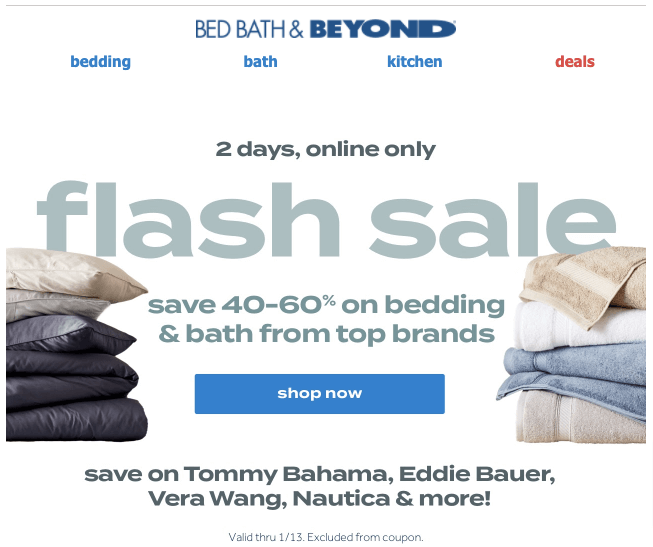
In this flash sale example, the retailer makes it clear that savings are available on “top brands”. It then goes on to provide further clarity by listing some of the brands included in the sale.
So if you were really holding out for a new set of Calvin Klein pillowcases, you can’t feel frustrated at Bed Bath & Beyond, because there’s no mention of CK in the sale announcement.
The more detail you provide upfront, the less chance you have of disappointing customers down the line. After all, sales are meant to be a positive thing.
2. Scout & Co
Sure, sales can be a highly effective marketing tactic. But whereas promotions traditionally happened at key points throughout the year—early January; at the height of summer—nowadays it’s almost a surprise to open your inbox and not be presented with some kind of discount.
Unfortunately, that makes it all too easy for consumers to overlook sales emails: “What’s the point? There’ll be another one in a week.”
So it’s in your best interests to focus attention. In this example, Scout & Co aims to engage customers and drive action by focusing its flash sale on a single brand:
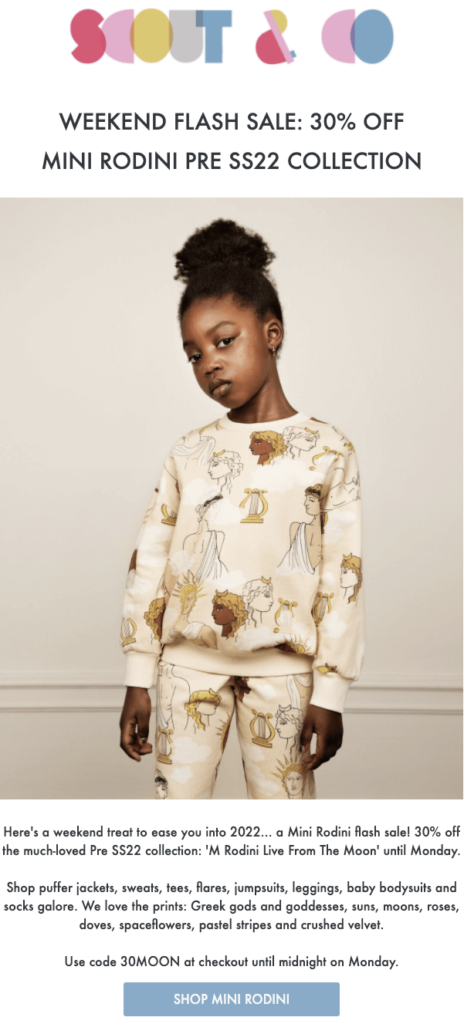
There are pros and cons to this approach. If you’re a parent who doesn’t particularly like Mini Rodini, chances are you’re not going to be interested in this sale.
On the other hand, if you love the Swedish childrenswear brand, it’s a highly compelling offer and one you’re probably not going to miss.
It’s all about striking the right balance. Target a niche that appeals to a wide enough segment of your audience, without being so broad that it fails to resonate. That could be a single brand or product category, or even one specific product.
3. Macy’s
Macy’s takes things one step further than Scout & Co. Rather than offering a discount on a single brand within its lineup, the department store giant runs multiple successive days of flash sales, targeting a different product category on each day.
On day one, we’re given a big discount on beauty products:
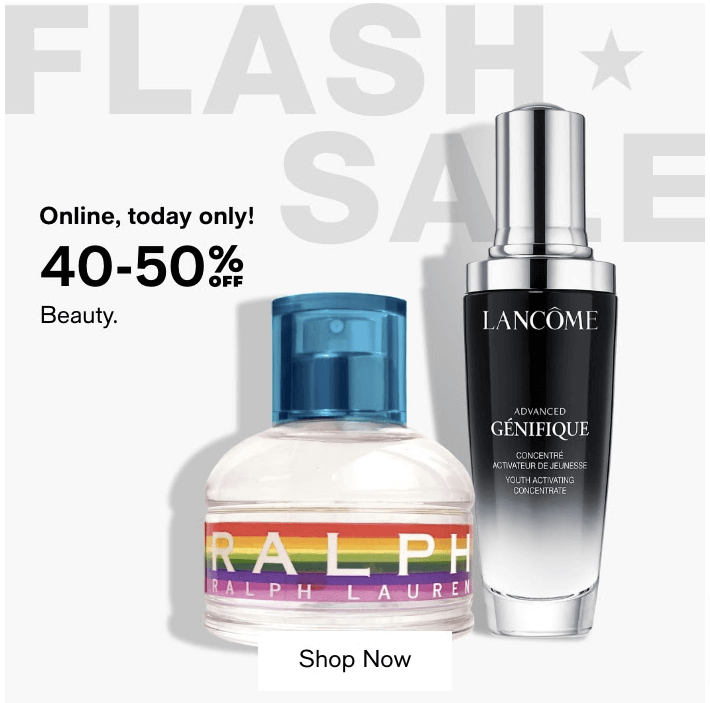
And on the next, Macy’s announces a new flash sale on coats and jackets:
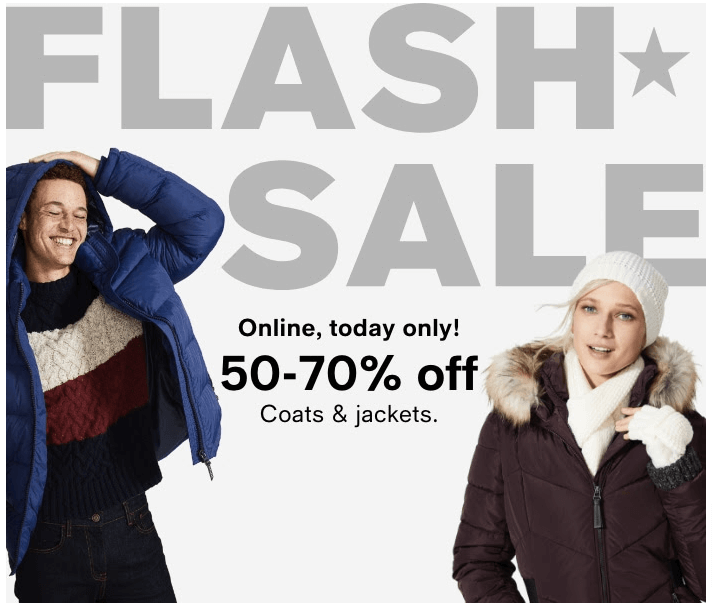
This approach is a highly effective way to drum up maximum attention. Once you’ve received the second of these emails, it’s a fair bet more are going to follow, which means you anticipate their arrival.
Even if you didn’t like the first two sales, you’ll still be looking out for the third (and the fourth, and the fifth) just in case it offers a substantial discount on the silk jumpsuit you’ve been casually eyeing up for months.
At the same time, each individual flash sale targets a specific niche, which means people who are interested in that niche are more likely to click.
4. Blue Apron
Your choice of call to action (CTA) probably won’t determine the success or failure of your entire flash sale. But writing a strong CTA can drive clicks and compel customers to buy.
The challenge for your copywriter is that there’s rarely, if ever, one single “right” choice of CTA.
As with everything in marketing, there’s a lot of conflicting advice about what an impactful, engaging call to action actually looks like. In one article, Quicksprout says:
- SAP improved its conversion rate by one-third with an orange CTA; and
- Performable found that a red CTA increased its conversion rate by 21 percent.
What does that tell us? Calls to action should be both orange and red?
So while there might not be any “right” or “wrong” answers when it comes to CTAs, I know that I like what Blue Apron has done in this flash sale launch email:
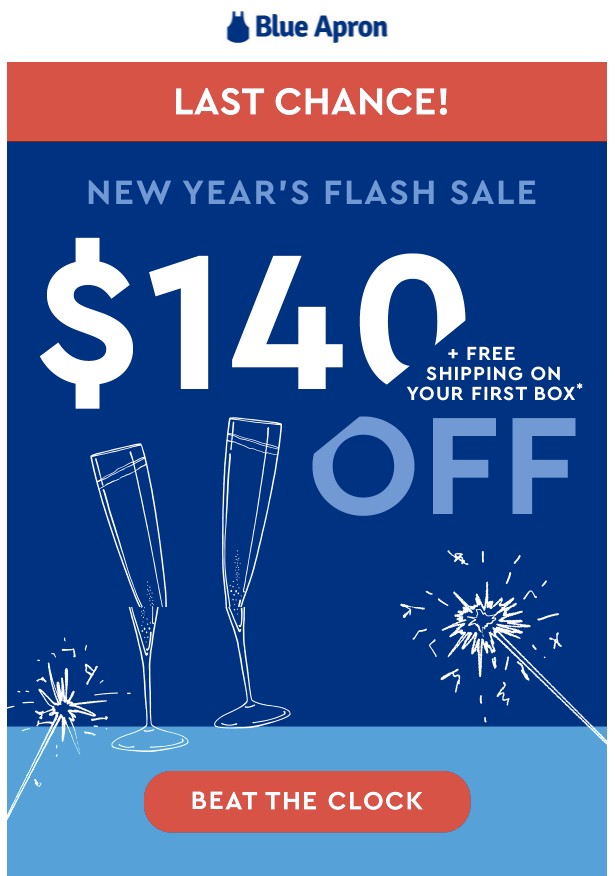
Rather than going with something generic like the ever-popular “Shop Now”, it adds an air of gamification. The phrase “Beat the Clock” also heightens the sense of FOMO they’re trying to generate by running a flash sale.
5. Chubbies
You’ll remember that about 600 words ago, I referenced a survey that basically said: a lot of consumers feel flash sales never include the products they actually want to buy.
If you’re using flash sales to clear out old or end-of-line stock, it’s not likely to include the most desirable products on your site.
However, if you have other motivations for launching a time-limited sale—like raising brand awareness, attracting new customers, increasing loyalty, or simply driving sales—then it might make sense to discount more attractive products.
This is precisely what Chubbies does here:
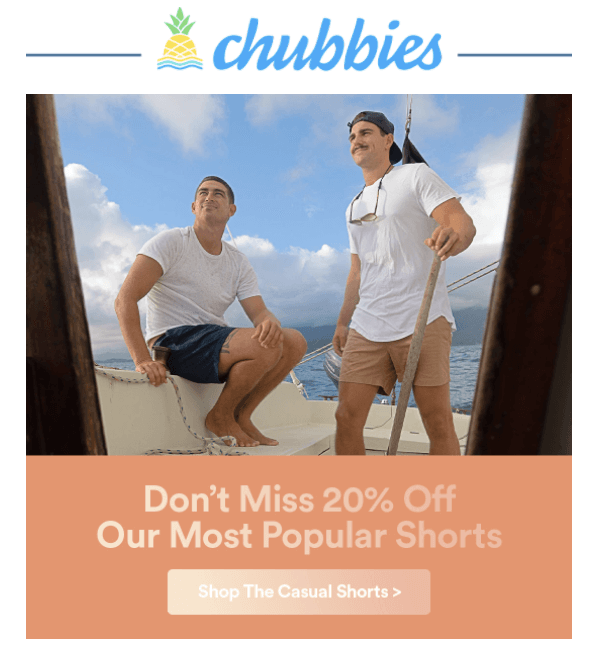
By emphasizing that the offer applies to its most popular shorts, the menswear brand makes its flash sale sound a lot more compelling.
This approach also means Chubbies can get away with offering a less aggressive discount. While a 20 percent saving is nothing to sniff at, it’s far from the 40+ percent reduction offered by most flash sales. But a saving of one-fifth is significant if it’s on a product you really want.
6. ColourPop Cosmetics
Ever seen a special offer that sounded incredible, only to learn that the real thing wasn’t exactly what you expected?
You’re not the only one. According to the audience and insights company Instantly, half of the consumers believe some promotions and discounts are misleading.
If you care about your brand reputation, you definitely don’t want customers to feel that you’re trying to pull the wool over their eyes. Avoid any feeling that your offer could be misleading by making it as clear and easy to understand as possible, as ColourPop Cosmetics does here:
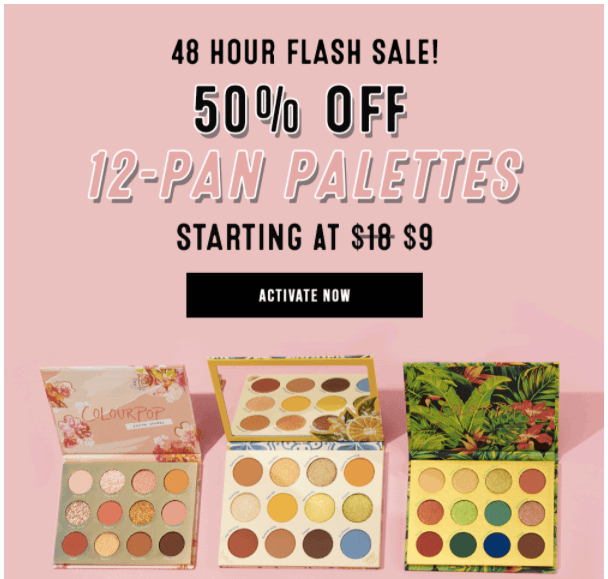
In four short lines of copy, the brand spells out:
- The length of its flash sale
- The discount on offer
- The products included in the sale
- The minimum price of those products
Explaining those key points at the very top of the launch email reduces the chances of shoppers feeling misled when they’re browsing your flash sale.
7. Bath & Body Works
As I’ve already noted, there are few certainties in the world of marketing.
Whereas ColourPop chooses to put all its cards on the table and explain every element of its promotion, Bath & Body Works takes the exact opposite approach by shrouding its flash sale in mystery.
All it tells us is when (and where) the sale is happening:
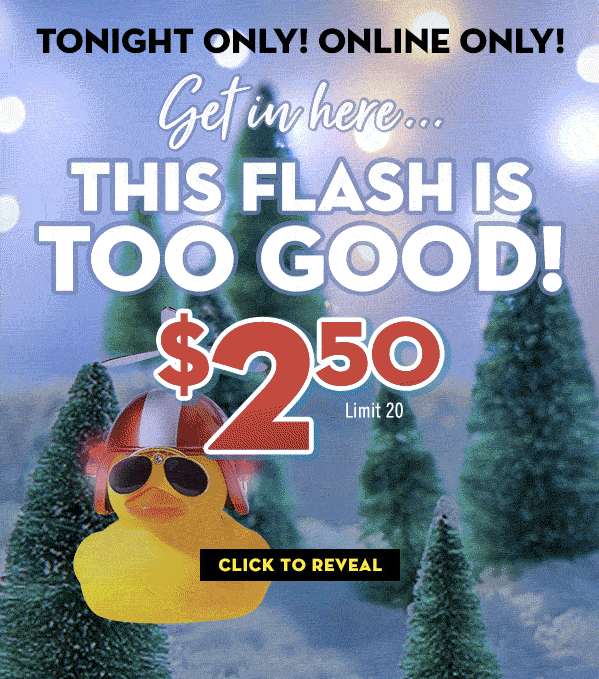
Again, this is a fantastic example of leveraging FOMO: the fear of missing out on an incredible offer compels you to click.
Not only that, but by imposing a limit on orders, Bath & Body Works makes it sound like it can barely afford to run the promotion in the first place; that this offer is so attractive, customers must be prevented from buying too many.

Conclusion
Any flash sale is only as strong as its promotional strategy.
You could offer 99 percent off your bestselling product and still not see a meaningful uplift in sales if you don’t promote it effectively.
As the examples in this article demonstrate, there are lots of different ways to run a flash sale. My number one piece of advice would be to decide on an angle upfront.
Whether you’re running a sitewide discount for an hour or offering 60 percent off a single brand or product category for two days, choosing an angle makes it much easier to promote your flash sale in a way that resonates with your target audience.

